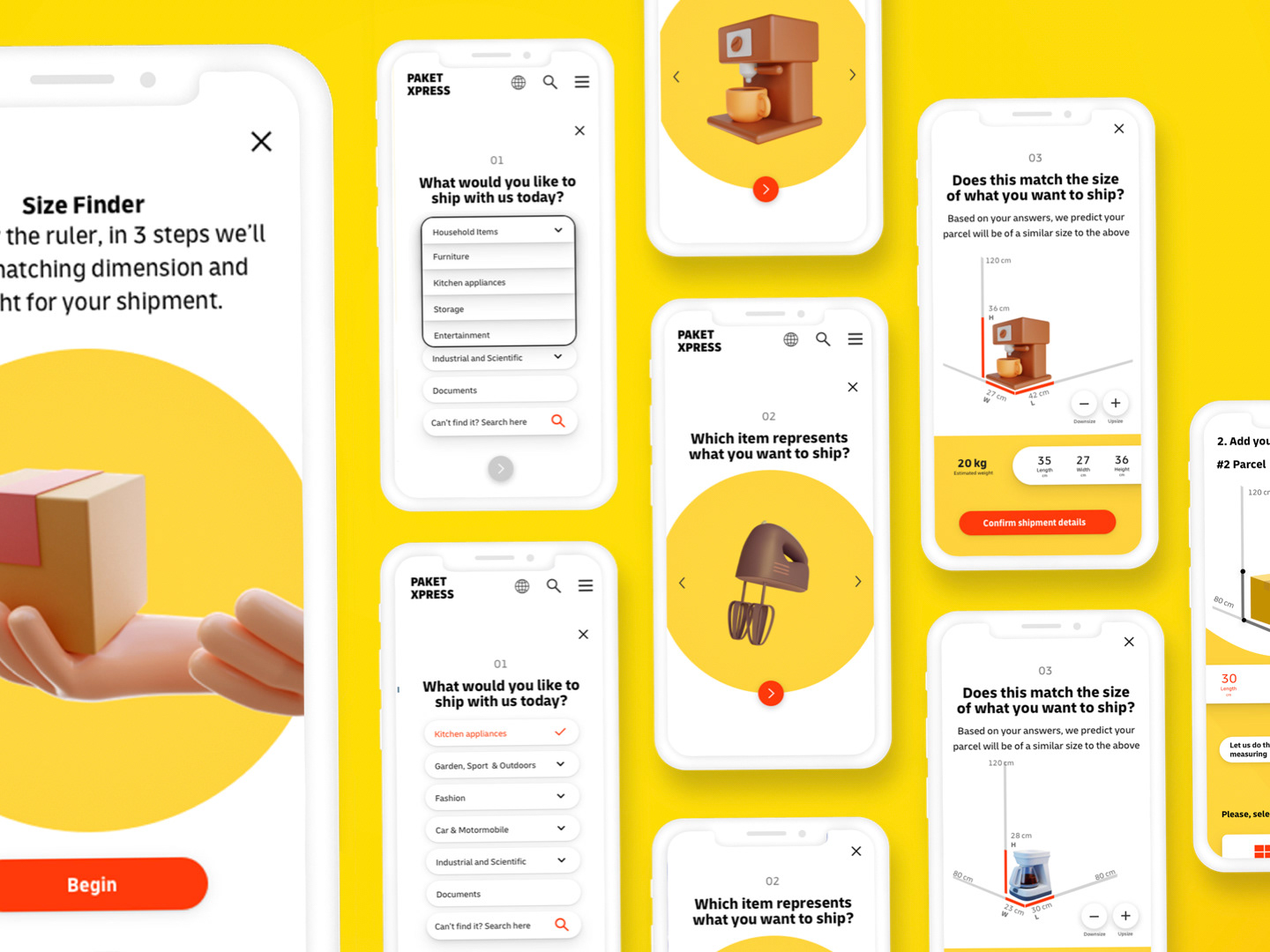Project TARA was born from insights gathered during various usability tests and customer journey analyses across different user segments at DHL. These insights revealed a significant disparity in how different segments experienced our site and interacted with our concepts, particularly during the weight and dimension sprint. Hence the need for, Target Audience Realignment, TARA.
The primary goal of Project TARA was to improve user segmentation across DHL's digital platform, creating tailored customer journeys for personal shippers and business users. By designing for customisation, we aimed to make the "Ship Now" journey simpler and less overwhelming for personal shippers, while enhancing the business journey with more relevant, informative content aligned with business user expectations. We built a white label against this philosophy and tested this in remote usability testing.

White label journey for Ship Now and Get a Quote and introduction of funnel to seamlessly segment users to avoid overstimulating users with unnecessary details or irrelevant shipping offers.

Reporting of User Research Results with actionable takeaways for design development

Branded TARA prototype
We tested this user flow and the unbranded prototype, found improvement areas for content and some functionality but otherwise there was a vast improvement in self segmentation and satisfaction in expectation. This created the momentum to refine our work under the DHL branding. We presented this to senior stakeholders but it was clear, this would take time. We needed to find the right opportunity to implement our idea.
Whilst the Ship Now Replacement didn't reach the extent of our ambition for Project TARA we were mindful of being an agile team and working in increments. This opportunity would give us the data to support further investment in customising the customer journeys towards specific segments. Something that we could then formalise in the project roadmap for 2024 and 2025 with our client.
Initial impact indication after a 5 week testing period
A year later we could see the impact of project TARA on our number of booking leads which had increased by 260% and the booking lead value which had grown by an additional 77 million euros compared to the year before. We had the grounding we needed to promote our future vision.
TARA, from our vision, became an umbrella topic. When business units whose shipping services we represented approached our PO with requests and briefs we could build a solution based on this knowledge and use the research gathered to prioritise certain topics such as strike-through pricing which then helped the business unit Express understand the intricacies of the complexities Businesses shipping exist in. We could communicate the needed for innovation, get others on board and get external investment for the development. We also found an opportunity space to simplify the ship now journey for personal shippers in markets where express was the only BU and we could remove complex restrictions from multiple business units in one space. This resulted in the following workshop outputs and design iterations.
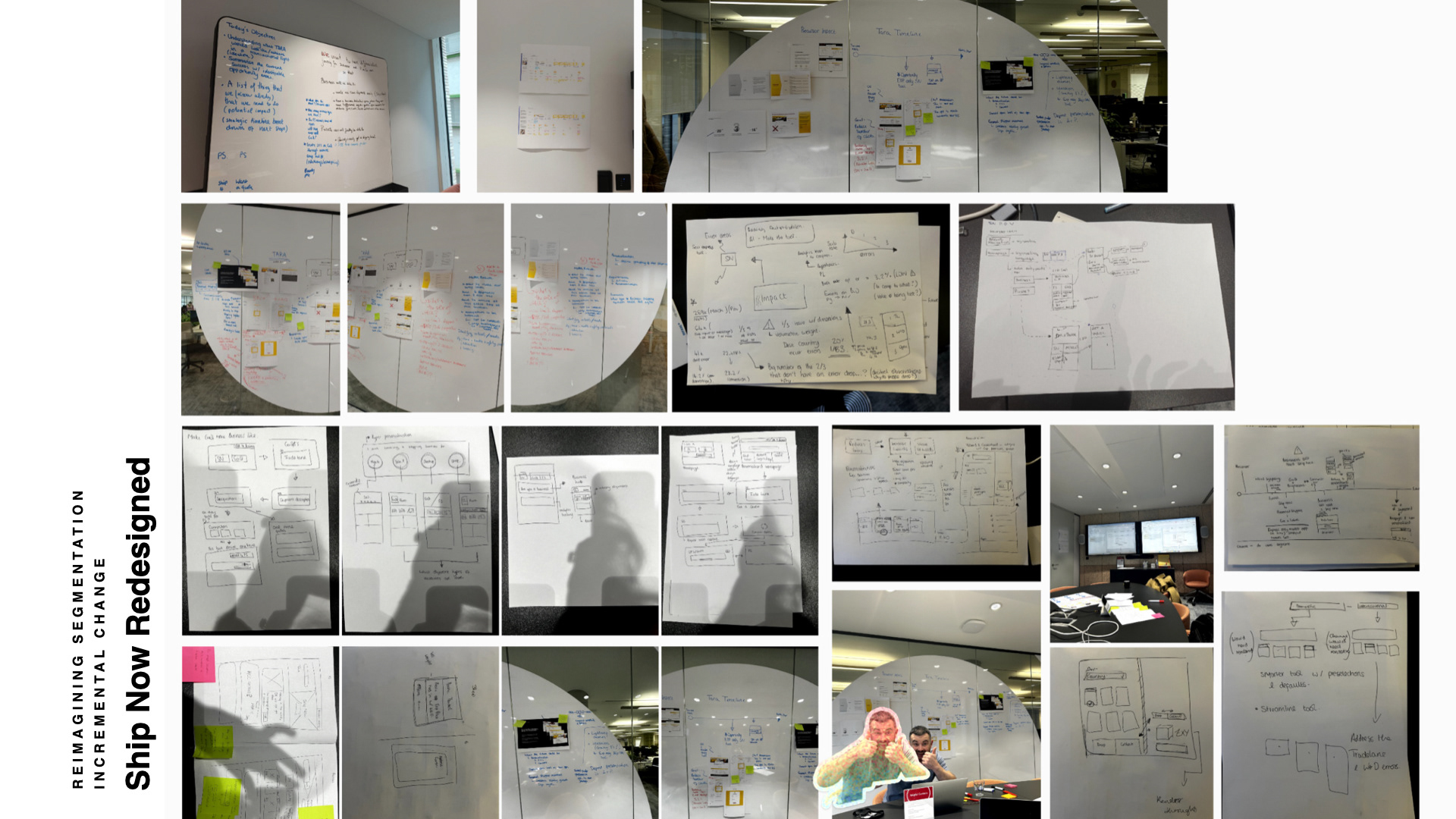
Initial UX & Data Tara workshop; We know a majority of markets have Express only private lanes in Get a Quote and Ship Now. Thus identifying an opportunity to explore a EXP only SN solution purpose build for our personal shipper segment.

Customer Journey Map for Personal Shippers created in X-Track Ship Now Condensed workshop
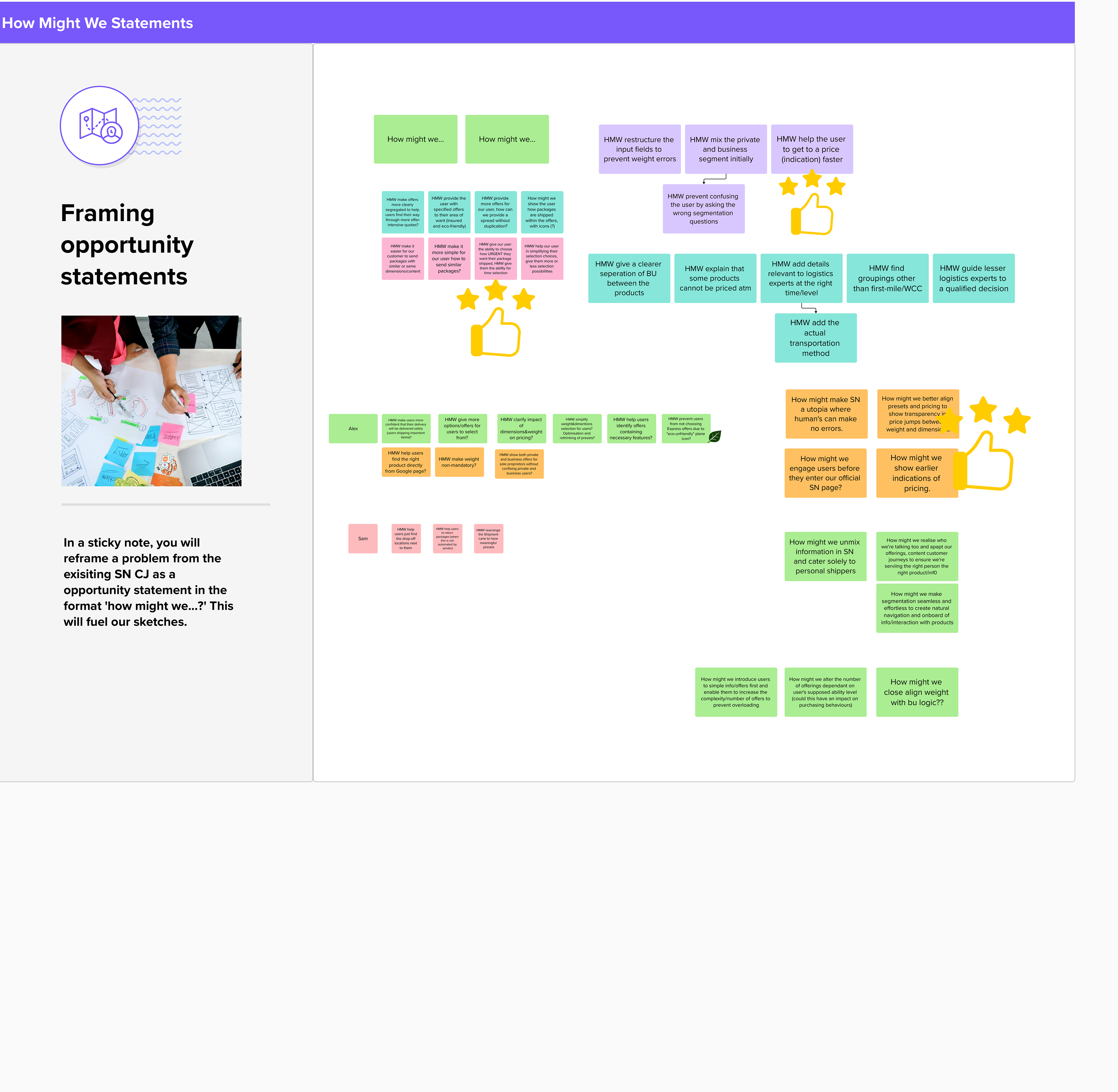
Cross Capability and PO's take on HMW statements based upon research and data to indentify opportunities for product development
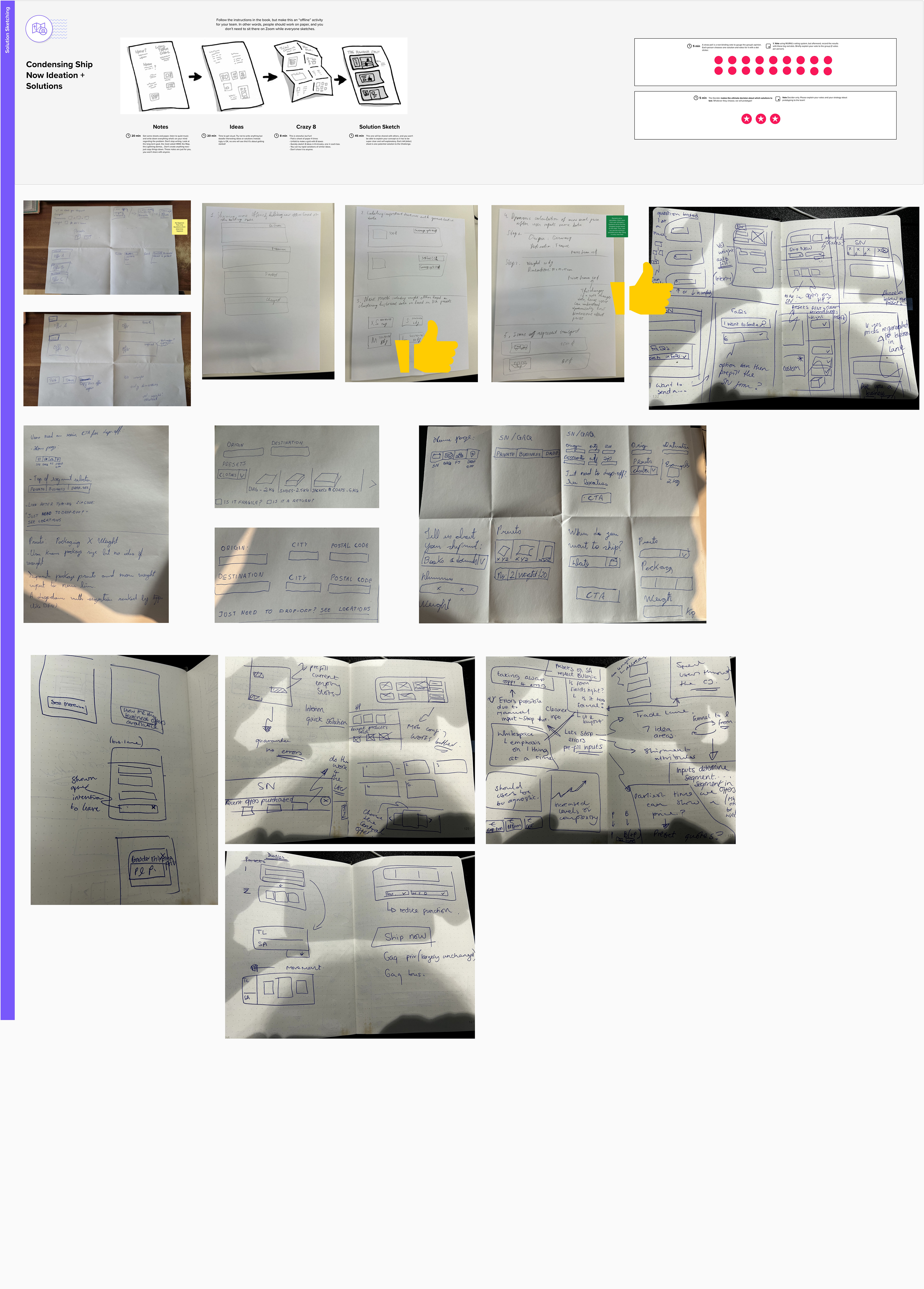
Crazy 8's Ideation method contributions from Team during workshop.
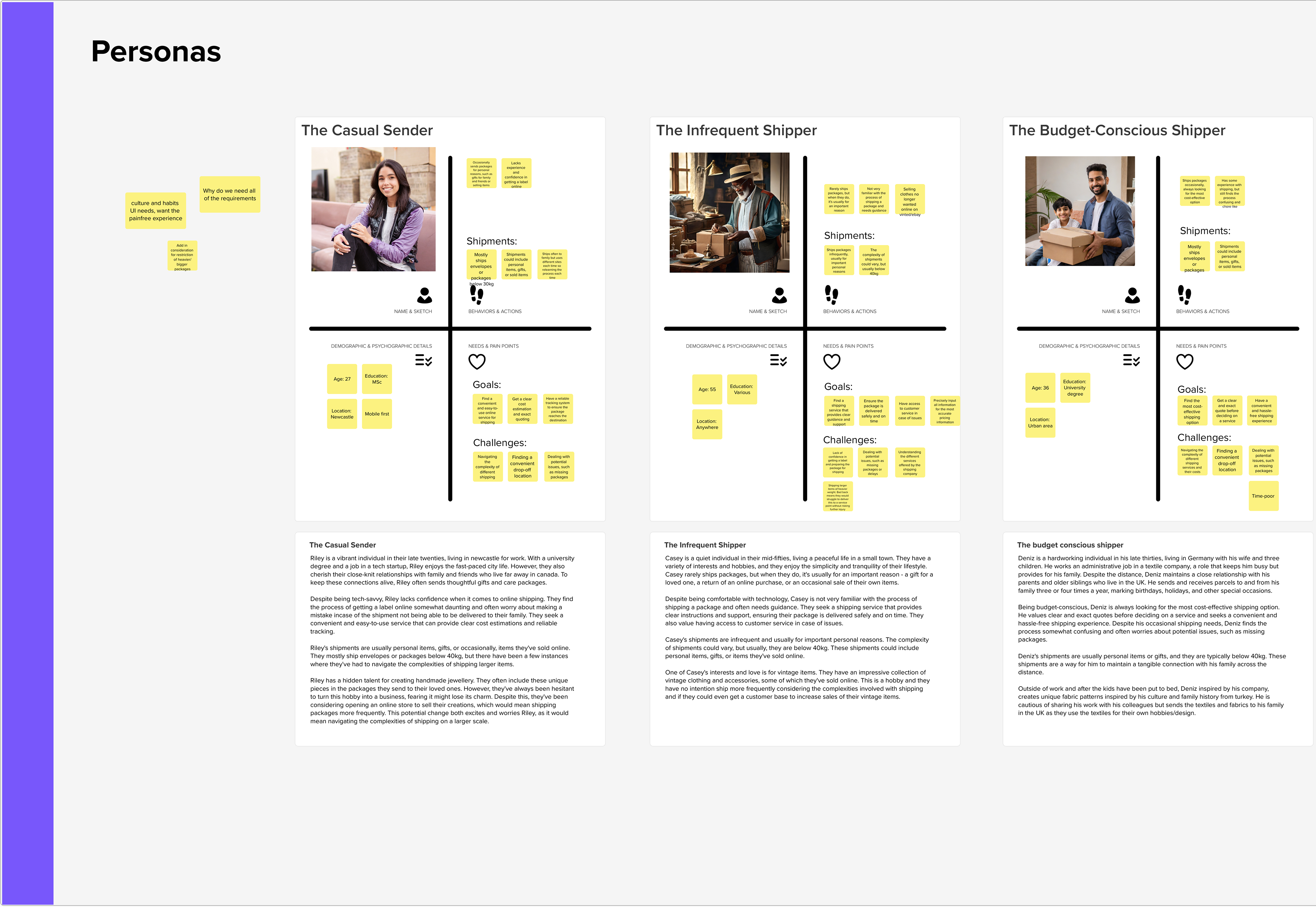
Persona creation to help participants apply empathy into the workshop ideation process to help frame opportunities and solutions.
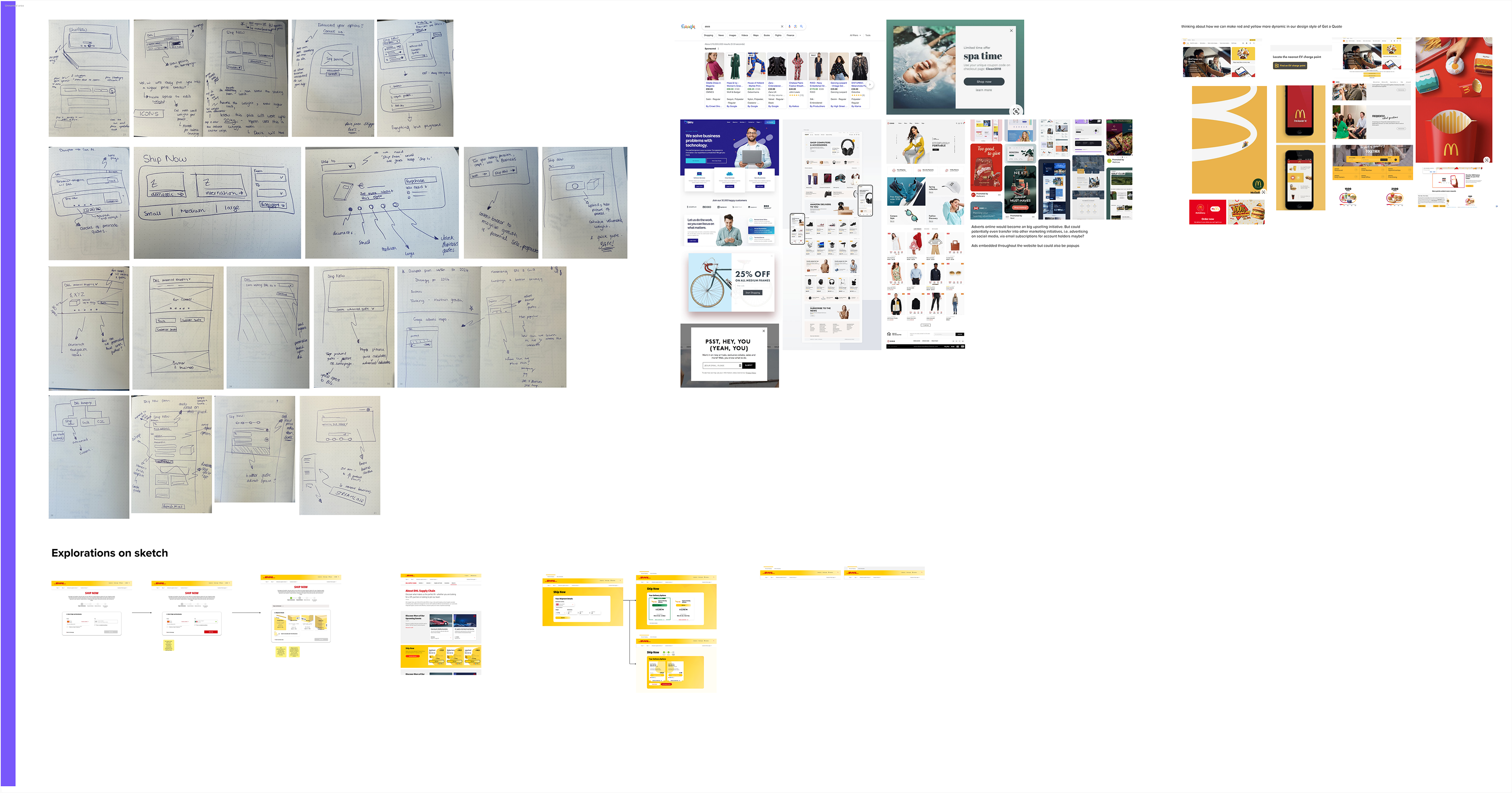
Following Iteration work with sketches, research into styles and colour and functionalities followed up by low-fi designs
This strategic initiative proves the value of the double diamond and the importance of doing our research and investing time into design thinking to determine the opportunities available. It has reaped the rewards in, proven by 2025's roadmap which includes investment into Ship Now condensed and adding account pricing to Get a Quote and further aligning the user journey with businesses.
Credit to my amazing team @publicissapient, and in particular, my UX colleague Leyre Giminez Ocasar.

